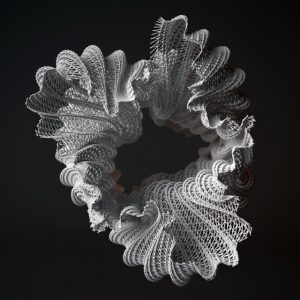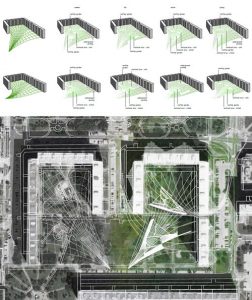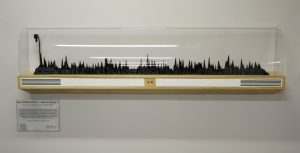version2
//Robert Oh
//Section C
//rhoh@andrew.cmu.edu
//Project-03-Dynamic-Drawing
//assigning variables
var i = 0;
var eyes_dir = 0;
var a = 0;
var b = 0;
var col = 0;
//function to make the panda figures
function panda(x, y, eyes, a) {
//ears
fill(0);
ellipse(x - a*25, y - a*30, a*40, a*30);
ellipse(x + a*25, y - a*30, a*40, a*30);
//body
fill(0);
ellipse(x, y + a*60, a*100, a*100);
fill(255);
ellipse(x, y, a*90, a*80);
ellipse(x, y + a*60, a*80, a*80);
fill(0);
strokeWeight(5);
quad(x - a*5, y + a*55, x - a*3, y + a*55, x + a*5, y + a*65, x + a*3, y + a*65);
quad(x + a*5, y + a*55, x + a*3, y + a*55, x - a*5, y + a*65, x - a*3, y + a*65);
//eyes
noStroke();
push();
translate(x - 20, y - 5);
rotate(radians(-60))
ellipse(0, 0, a*30, a*20);
pop();
push();
translate(x + 20, y - 5);
rotate(radians(60))
ellipse(0, 0, a*30, a*20);
pop();
fill(255);
ellipse(x - 15 + eyes, y - 10, a*5, a*5);
ellipse(x + 15 + eyes, y - 10, a*5, a*5);
//nose + mouth
fill(0);
ellipse(x, y + 7, a*5, a*5);
//what happens when the mouse hovers over a panda face
if (dist(mouseX, mouseY, x, y) <= a*40){
fill(255, 147, 147);
arc(x, y+15, a*20, a*20, 0, PI);
fill(255, 53, 53);
ellipse(x - 30, y + 15, a*15, a*15);
ellipse(x + 30, y + 15, a*15, a*15);
}
else{
quad(x - a*1, y + a*7, x + a*1, y + a*7, x + a*1, y + a*15, x - a*1, y + a*15);
quad(x - a*1, y + a*15, x , y + a*16, x - a*7, y + a*20, x - a*8, y + a*20)
quad(x + a*1, y + a*15, x , y + a*16, x + a*7, y + a*20, x + a*8, y + a*20)
}
}
//function to make the panda figures upside down
function panda_down(x, y, eyes, b) {
//ears
fill(0);
ellipse(x - b*25, y + b*30, b*40, b*30);
ellipse(x + b*25, y + b*30, b*40, b*30);
//body
fill(0);
ellipse(x, y - b*60, b*100, b*100);
fill(255);
ellipse(x, y, b*90, b*80);
ellipse(x, y - b*60, b*80, b*80);
fill(0);
strokeWeight(5);
quad(x - b*5, y - b*55, x - b*3, y - b*55, x + b*5, y - b*65, x + b*3, y - b*65);
quad(x + b*5, y - b*55, x + b*3, y - b*55, x - b*5, y - b*65, x - b*3, y - b*65);
//eyes
noStroke();
push();
translate(x - 20, y + 5);
rotate(radians(60))
ellipse(0, 0, b*30, b*20);
pop();
push();
translate(x + 20, y + 5);
rotate(radians(-60))
ellipse(0, 0, b*30, b*20);
pop();
fill(255);
ellipse(x - 15 + eyes, y + 10, b*5, b*5);
ellipse(x + 15 + eyes, y + 10, b*5, b*5);
//nose + mouth
fill(0);
ellipse(x, y - 7, b*5, b*5);
//what happens when the mouse hovers over a panda face
if (dist(mouseX, mouseY, x, y) <= b*40){
fill(255, 147, 147);
arc(x, y - 15, b*20, b*20, PI, 0)
fill(255, 53, 53);
ellipse(x - 30, y - 15, b*15, b*15);
ellipse(x + 30, y - 15, b*15, b*15);
}
else{
quad(x - b*1, y - b*7, x + b*1, y - b*7, x + b*1, y - b*15, x - b*1, y - b*15);
quad(x - b*1, y - b*15, x , y - b*16, x - b*7, y - b*20, x - b*8, y - b*20)
quad(x + b*1, y - b*15, x , y - b*16, x + b*7, y - b*20, x + b*8, y - b*20)
}
}
function setup() {
createCanvas(640, 480);
}
function draw() {
background(146, col, 171);
noStroke();
//drawing all the pandas
for (i = 0; i < 4; i++) {
//how to make eyse look at the bamboo!
eyes_dir = (mouseX - (175*i + 60))/100;
//these are the factors I'm multiplying all my values by
a = mouseY / 300;
b = (480 - mouseY) / 300;
if (mouseY >= 300){
b = 0;
}
if (mouseY <= 180){
a = 0;
}
panda(175*i + 60, 400, eyes_dir, a);
panda_down(175*i + 60, 80, eyes_dir, b);
}
//drawing the bamboo
fill(48, 153, 84);
rect(mouseX - 6, mouseY - 30, 12, 19);
rect(mouseX - 6, mouseY - 10, 12, 19);
rect(mouseX - 6, mouseY + 10, 12, 19);
push();
fill(97, 255, 76);
translate(mouseX + 18, mouseY - 25);
rotate(radians(-30));
ellipse(0, 0, 20, 8);
pop();
//changing the color of the background
col = mouseY / 2;
}
When I read the prompt for this project, I knew right away that I wanted to do something with eyes. I felt that having a group of eyes staring at your mouse would add some excitement and personality to my project. After figuring that out, I figured I would just add some lovely pandas, and based the rest of the project off of that!

![[OLD FALL 2018] 15-104 • Introduction to Computing for Creative Practice](../../../../wp-content/uploads/2020/08/stop-banner.png)




